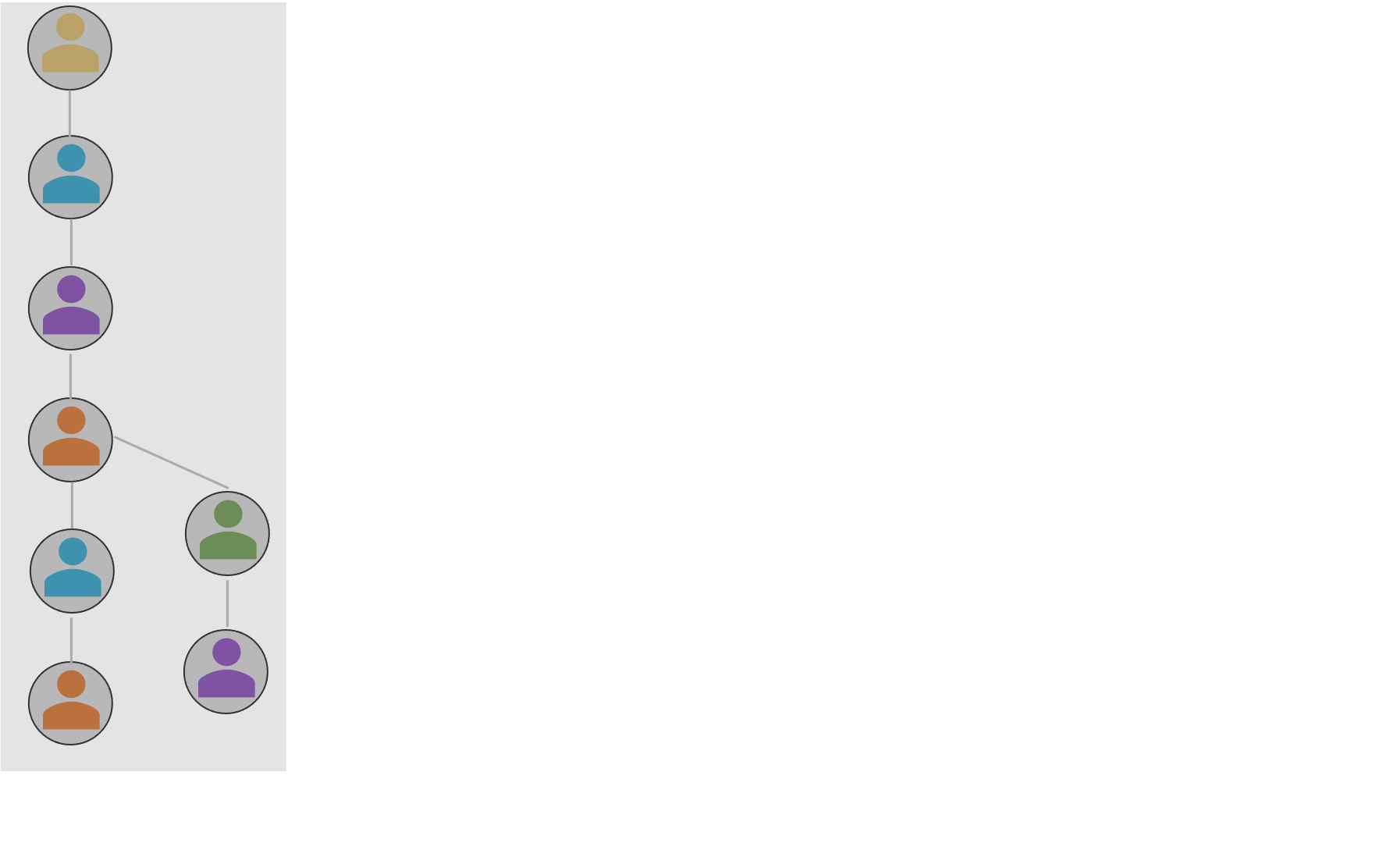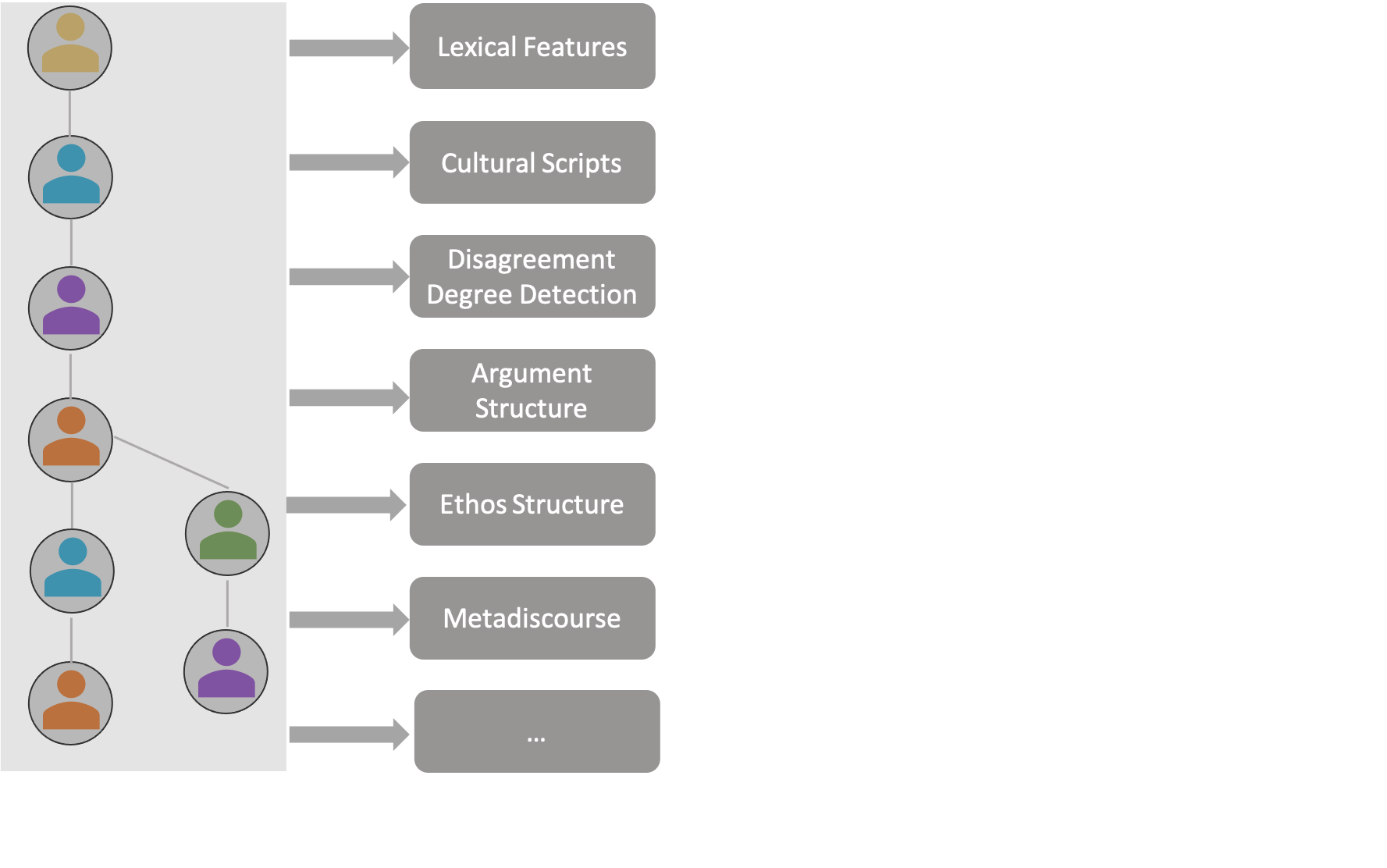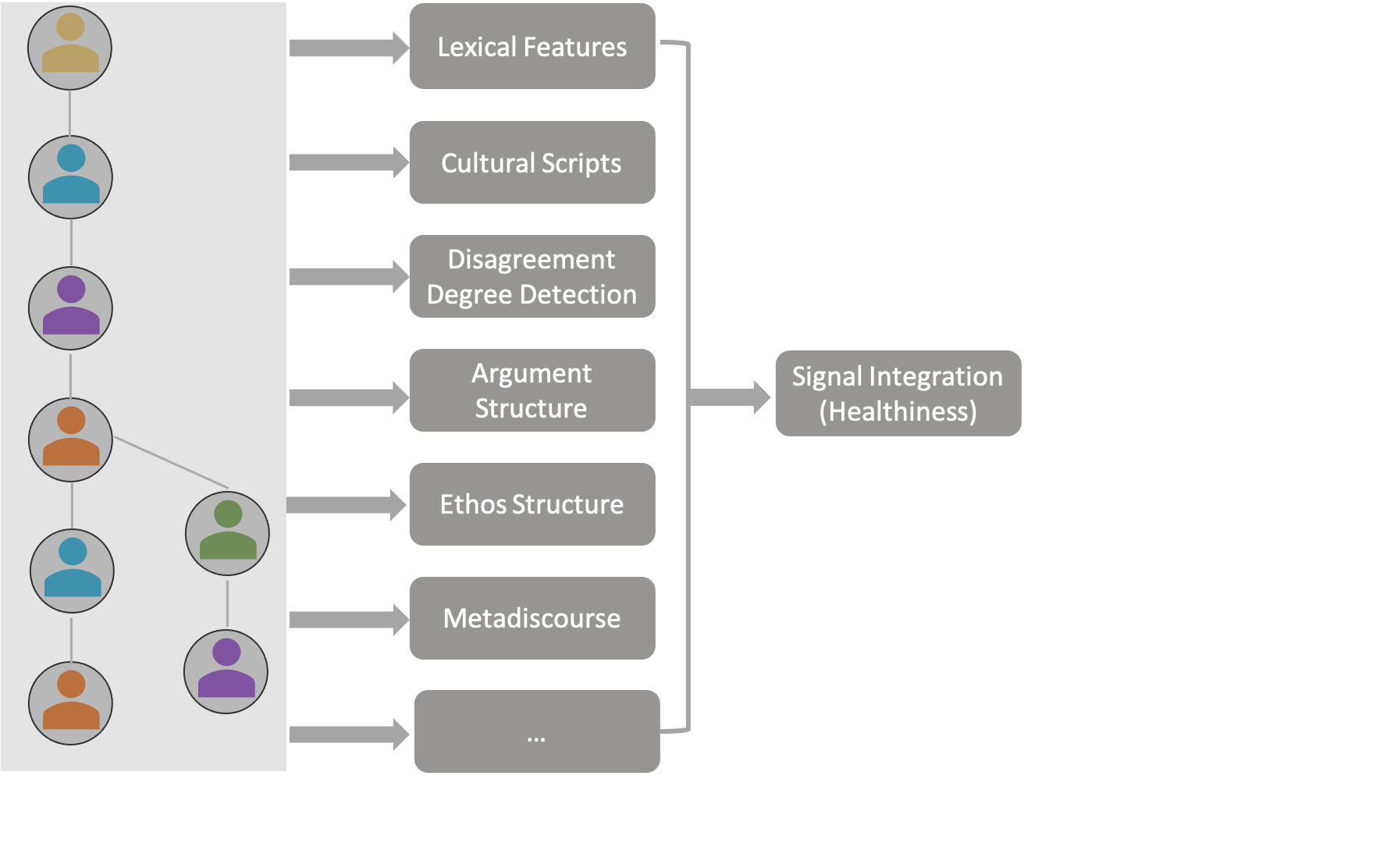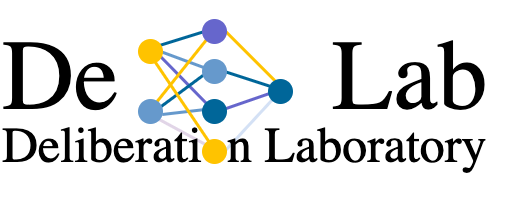Our DeLab framework
To improve social media conversations, we have set up a (technical) framework combining various computational methods.
Below you will find an overview of the general framework.
For more specific insights please have a look at the blog page where we occasionally report about the specific modules and the project's progress in general.
Below you will find an overview of the general framework.
For more specific insights please have a look at the blog page where we occasionally report about the specific modules and the project's progress in general.

Step 1: The conversations
We begin by importing social media conversations. This involves, for example, downloading Twitter and Reddit data - in real time. We then extract conversations using the reply chain. We visualize the conversations as a network consisting of tweets (the nodes) and replies (the edges). A first prototype is available on pypi.org: https://pypi.org/project/delab-trees/. In many instances, this looks like the figure on the left - a conversation tree.

Step 2: The computational modules
The conversations are next handed over to our computational modules which then process the data. During this step, cultural scripts and their potential misuse are detected. Linguistic properties are also extracted in order to help separate productive and unproductive disagreements. We extract argument and ethos structures as well as a large set of lexical features like topics or sentiments. While some of the modules rely on rule-based or statistical algorithms, some others use AI to extract the relevant values. Depending on the specific module, the results might look like a numeric value, a statistical distribution or an argument or ethos network.

Step 3: The signal integration
Each of the computational modules' signals (values, distributions, networks) are passed to the signal integration module. As the name of the module already implies, the individual signals are integrated and combined. Ideally, we generate only one value determining the healthiness of the conversations. However, in many instances, we might need to calculate a multi-dimensional proxy for measuring the healthiness of a conversation. We see great potential in using AI procedures to combine the signals.

Step 4: The intervention assessment
When we know how healthy (or good) a conversation is, we next need to determine whether the conversation requires an intervention. However, this is only a part of the story. We also need to decide what type of intervention is most likely to help users get back on track. This is determined based upon the general healthiness of the discussion as well as the modules' signals itself. Some modules' signals might rule out the general healthiness and even if the conversation is not characterized by hate speech, an intervention might still be needed. We will run experiments to extract and test such scenarios.

Step 5: The intervention
Finally, when it is determined that an intervention is required and the AI algorithms have decided upon the most proper type of intervention, then the intervention is generated and posted to the respective social media site. This is still not the end of the story, however. We will keep track of the conversations to analyze the responses and to check in how far the intervention was successful. We will use the responses as input to our self-learning algorithm. Hence, the AI system is learning constantly - making the system better over time.


